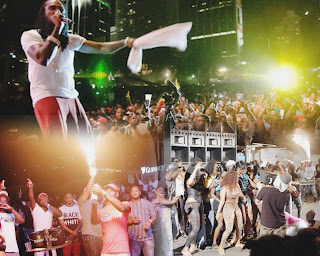Jamaica's vibrant dancehall culture has captivated the world with its infectious rhythms, energetic dance moves, and unique fashion. Rooted in the island's rich musical heritage, dancehall has evolved into a global phenomenon that transcends borders and unites people through its pulsating beats and expressive artistry. In this article, we delve into the origins of dancehall, its key characteristics, and its profound influence on music, fashion, and popular culture worldwide.
1. Origins and Evolution of Dancehall
Dancehall emerged in Jamaica during the late 1970s, drawing inspiration from earlier musical genres like ska, rocksteady, and reggae. It represented a shift from the politically charged lyrics of reggae to a more party-oriented, dance-centric style of music. Dancehall became synonymous with the vibrant street parties held in Kingston's inner-city neighborhoods, where sound systems played an essential role in amplifying the music and fostering a sense of community.
2. Key Characteristics of Dancehall
a) Rhythm: Dancehall beats are characterized by their infectious, up-tempo rhythms, driven by prominent drum patterns and basslines. The music often incorporates elements of electronic music, hip-hop, and reggae, resulting in a fusion of genres that sets dancehall apart.
b) Lyrics and Toasting: Dancehall lyrics reflect the realities of Jamaican life, encompassing themes of love, social commentary, and party culture. Artists often engage in "toasting," a form of rhythmic chanting or rap-like vocal delivery, to showcase their lyrical prowess and connect with the audience.
c) Dance Moves: Dancehall culture is inseparable from its vibrant dance moves, which serve as a physical expression of the music. From iconic steps like the "Bogle" and "Dutty Wine" to more recent trends like "Fling Yuh Shoulda" and "Gweh," dancehall has spawned an array of energetic and visually captivating dance styles.
3. Global Influence of Dancehall
a) Music: Dancehall has left an indelible mark on popular music genres around the world. Artists such as Sean Paul, Shaggy, and Rihanna have achieved international success by infusing dancehall elements into their music, resulting in chart-topping hits. The infectious rhythms and catchy melodies of dancehall have influenced diverse genres like hip-hop, pop, and EDM, helping to shape the sound of contemporary popular music.
b) Fashion: Dancehall fashion is characterized by its boldness, vibrancy, and individuality. From flamboyant outfits to extravagant hairstyles and accessories, dancehall fashion embodies a fearless and expressive style that has inspired global fashion trends. Designers and fashionistas worldwide draw inspiration from the colorful and eclectic looks often seen in dancehall culture.
c) Dance: Dancehall dance moves have become a global phenomenon, captivating audiences on stages, music videos, and social media platforms. Artists like Major Lazer and Beyoncé have incorporated dancehall-inspired choreography into their performances, bringing Jamaican dance moves to mainstream audiences worldwide. Dancehall dance workshops and classes are now held in various countries, spreading the joy and energy of the culture to enthusiasts around the globe.
Overall, It may be said
Jamaica's dancehall culture is an influential force that has transcended its origins to become a global phenomenon. Its infectious rhythms, expressive lyrics, vibrant fashion, and captivating dance moves have left an indelible mark on music, fashion, and popular culture worldwide. As dancehall continues to evolve and adapt, it remains a testament to the power of cultural expression and the ability of music and dance to unite people from all walks of life.






No comments:
Post a Comment